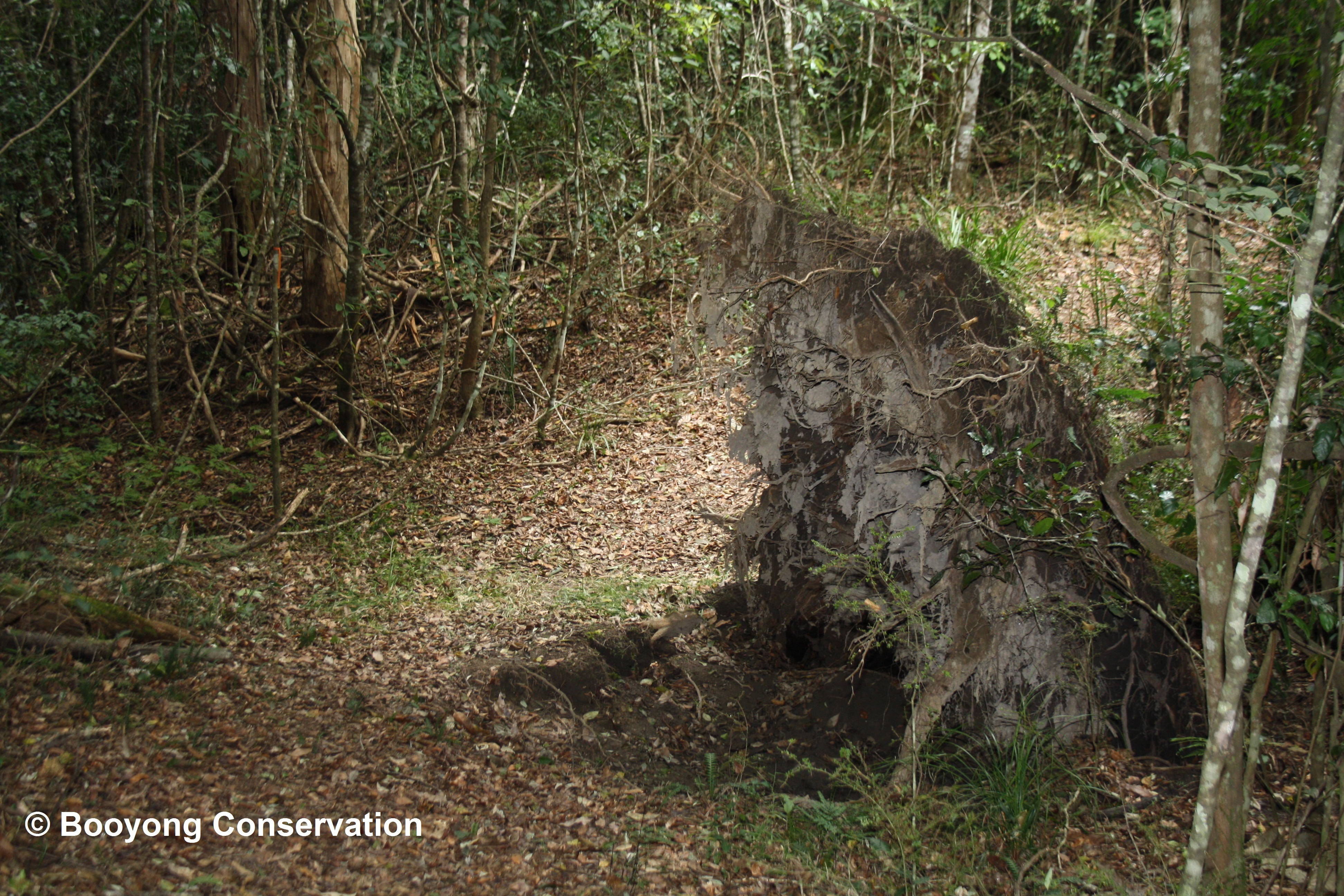There are landmarks throughout the conservation area we have named to provide us with a location when walking through the bush and one is the “Tabletop”.
The removal of dead and fallen trees on the ground for firewood and agricultural clearing over time contributes significantly to the loss of habitat, directly impacting biodiversity. Fallen trees provide wood hollows for animals and provide material for litter upon the forest floor.
Over 290 Australian vertebrae species use tree hollows and many are dependent upon decaying wood for their survival. The loss of surface moisture resulting from the removal of dead wood will affect soil organisms below fallen logs as well as changing the above ground plant cover and will impact on ecological processes. Small organisms and fungi are also important in the breakdown of fungi and recycling nutrients back into the soil.
Removal of dead wood and trees may seriously affect the long term availability and viability of habitat. A variety of threatened species listed by the Office of Environment and heritage including frogs, gliders, snakes, birds and parrots, goanna’s, owls, quolls and bats rely on the continuing presents of fallen trees. Ground dwelling species also dead trees and hollows and the removal of dead wood and trees and the formation of hollows in eucalypts can take between 120 and 200 years.
For this reason we will not remove fallen trees from the conservation area unless we are clearing fence lines or paths that enable us access for maintenance. The table top will remain where it is and perhaps in 100 years it too will become someone’s home!
